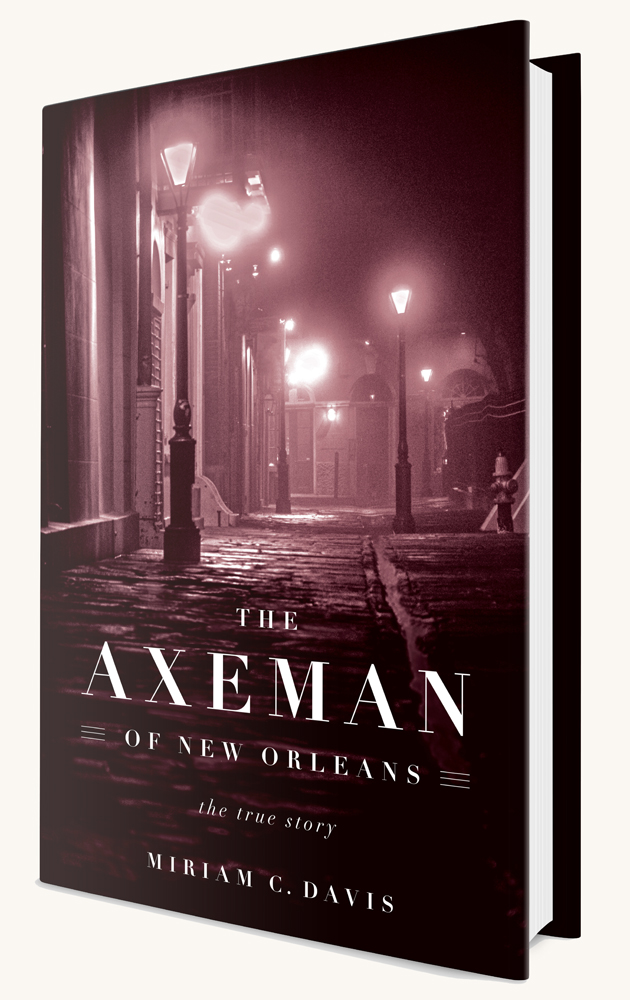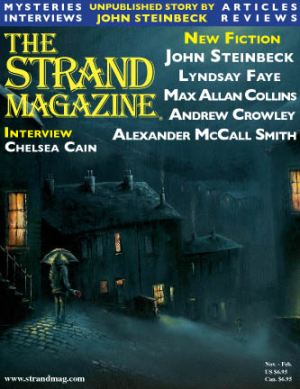 Exploring a great mystery of the American South, The Axeman of New Orleans: The True Story reveals the grisly history of the nation’s first serial killer. The story has been the subject of much speculation in literature and on the web—and most recently on the FX television series American Horror Story—but the extent of the bloodlust, panic and deception caused by this string of murders has never been fully investigated until now. Terrorizing the city from 1910 to 1919, the mysterious Axeman repeatedly broke into the homes of Italian grocers in the dead of night, leaving his victims in a pool of blood.
Exploring a great mystery of the American South, The Axeman of New Orleans: The True Story reveals the grisly history of the nation’s first serial killer. The story has been the subject of much speculation in literature and on the web—and most recently on the FX television series American Horror Story—but the extent of the bloodlust, panic and deception caused by this string of murders has never been fully investigated until now. Terrorizing the city from 1910 to 1919, the mysterious Axeman repeatedly broke into the homes of Italian grocers in the dead of night, leaving his victims in a pool of blood.
Victimized by fear, suspicion and corruption and enveloped in jazz, the city of New Orleans became consumed by the manhunt for a killer and the wrongful conviction of two innocent men. Revealing new details and evidence on theories that have fascinated Americans for almost a century, Miriam C. Davis brings readers an account as chilling as it is informative.
What’s the number one myth about the Axeman that you hope your book clears up?
Whether or not Joseph Mumfre was the Axeman. In his book Ready to Hang, New Orleans writer Robert Tallant suggested that Mumfre might have been the killer, and he’s been the most popular suspect ever since.
The Axeman murders have sometimes been associated with the Black Hand Mafia organization, which is coming back into the limelight because of a new movie starring Leonardo DiCaprio. If you could make a star-studded cast for an Axeman adaptation, who would be in it?
Hmm. That requires some thought. Maybe Taylor Lautner (Jacob in the Twilight Saga) as Frank Jordano. He’s not as large as Frank but sooo dishy. Al Pacino is looking a bit frail these days, so he could play Iorlando. George Clooney as the Jordanos’ lawyer. Jennifer Lawrence (The Hunger Games) might be good as Rosie Cortimiglia, and Kevin Costner as Jim Coulton, the intrepid reporter from the Times-Picayune (although he’s older than Coulton was). Gene Hackman would be perfect as Sheriff Marrero and Andy Garcia as the Italian detective John Dantonio. And we’ve got to find a role for John Goodman, because I love him and I’ve been told he lives in New Orleans.
 Thirty years after Jack the Ripper terrified London, the Axeman drove fear through the heart of New Orleans. What are some major parallels between these two serial killers?
Thirty years after Jack the Ripper terrified London, the Axeman drove fear through the heart of New Orleans. What are some major parallels between these two serial killers?
Both killers had a specific target that they had some sort of grudge against. And, of course, both struck terror in their communities in part because people were so unused to the idea of a murderer who killed so brutally for no obvious motive. And both killings produced letters to the press purporting to be from the killer, although they probably were written by others.
In addition to exploring this string unsolved murders, The Axeman of New Orleans is also a wrongful conviction story. Why do you think that so many people at the time had trouble seeing how these crimes intertwined?
I think that the main reason was that people—including the police—weren’t that familiar with the concept of a serial killer. The idea of a murderer who acted without an obvious motive was counterintuitive. Believing that the Jordanos attacked the Cortimiglias over a business dispute made more sense to people at the time and fit into their (to some extent deserved) stereotype of Italian vendettas.
 You recently wrote a blog post for the Strand Magazine about five fictional representations of the Axeman. Which one is your favorite, and which one would you say is the most accurate?
You recently wrote a blog post for the Strand Magazine about five fictional representations of the Axeman. Which one is your favorite, and which one would you say is the most accurate?
I’d say Chuck Hustmyre’s The Axman of New Orleans was probably the most accurate. He really understands that period of New Orleans’s history. As to which is my favorite, because I’m a historian, a historically accurate story like Hustmyre’s has a lot of appeal for me. On the other hand, while I don’t read much fantasy, I found strangely compelling Suzanne Johnson’s notion of a time-traveling serial killer in Elysian Fields.
You’ve said that the idea for Axeman came to you while briefly procrastinating on another project. Did you come up with any new book ideas while working on this one?
The problem is that I came up with too many new book ideas! There is one idea in particular I’m meditating on, and we’ll have to see if anything comes of it.
What was the best part about writing this book?
That’s easy. Having a tax-deductible excuse to visit New Orleans.
Miriam C. Davis has a PhD in history and is the author of Dame Kathleen Kenyon, an account of the life of the most important female archeologist of the twentieth century. She lectures for Smithsonian Journeys and lives in Montgomery, Alabama.
Also read: How the ‘Axeman of New Orleans’ Terrorized a City and Escaped the Law (Vice.com)
The Axeman of New Orleans officially pubs today (March 1) and is available wherever books and e-books are sold.
[Get it now $19] [Request a review copy]
1 Comment
I am honored to have been mentioned as a small part of the inspiration for Dr. Davis’s excellent book.